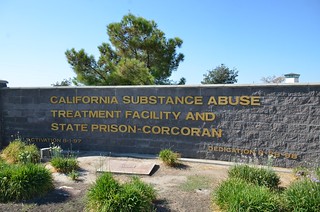 Plan calls for settlement with prison plaintiffs, sentencing reform
Plan calls for settlement with prison plaintiffs, sentencing reform
by Brian Leubitz
As I mentioned yesterday, the prisons are a mess. However, things can get worse. My friend, and SF School Board member, Matt Haney co-authored an op-ed in the SF Chronicle with Van Jones about the governor’s position on the issue:
Gov. Jerry Brown confirmed this week that he is pulling his prison policies out of a 1980s playbook. It is heartbreaking to watch our nation’s most famous Democratic governor cling to outdated, lock ’em up notions that even conservatives are abandoning in droves. …
Tuesday, he made his most shocking step yet by proposing to send inmates to for-profit prisons. This boondoggle will cost an additional $315 million and more than $1 billion over three years to house thousands of people in private prisons leased by the state. Even our most extreme, fear-mongering politicians of decades past would have been reluctant to put forward such a scheme.
Brown appears hell bent on being on the wrong side of history. Across the political spectrum, leaders are beginning to understand that we need to invest in rehabilitation, re-entry programs, and evidence-based alternatives, rather than continuing our failed policies of mass incarceration. (Matt Haney and Van Jones / SF Chronicle)
So, while the Governor is working hard to come to some sort of immediate solution, there is not much optimism for a progressive in the plan. Meanwhile, Sen. Steinberg has a plan, but it relies on one very crucial assumption: he can get the plaintiffs in the suit to settle and have the judges agree to a three year delay on implementation. As I mentioned yesterday, it is a big risk and not entirely clear how the judges would rule even with a settlement.
But there is reason to believe that a settlement would be possible. And perhaps Gov. Brown is playing a game to force the plaintiffs hand in some really tricky three dimensional chess strategy. Brown’s plan is pretty much everything the plaintiffs don’t want. Under all this, they would like to see some sentencing and other reforms in the prison system. The governor’s plan pretty much goes in the entirely opposite direction. It is also worthwhile to note that the ACLU crunched some numbers to show that the state could meet the court order only using the techniques Brown has previously supported.
Now here is where Steinberg comes in. If he can get the plaintiffs to settle, and the court agrees to a delay, perhaps we have created the real opportunity that we need to follow the lead of other states like Kansas (!) that have already done much to decrease the mass incarcerations that have been building in our country over the past fifty years. In fact, the ACLU has a very interesting report on the subject. While three years may not be the time frame everybody would ideally target, it is realistic. And maybe Steinberg’s plan is a good start on how we get there.
Now, as for that plan, you can see an outline here or over the flip. It is far from perfect. It calls for an advisory commission to review our public safety system, but doesn’t really provide the specifics of how we really get to the important reductions we need in our prison system. However, maybe that lack of specificity is for the best now. Maybe it could set up the conditions of real reform that we need. But if we don’t meet that court order, we’ll be back to square one in three years. And maybe those three years could make a big difference.
Durable Solutions – Senate Democratic Caucus – Aug2813
 I’ll was on KPFK today at 8:40 to discuss the prison situation
I’ll was on KPFK today at 8:40 to discuss the prison situation


